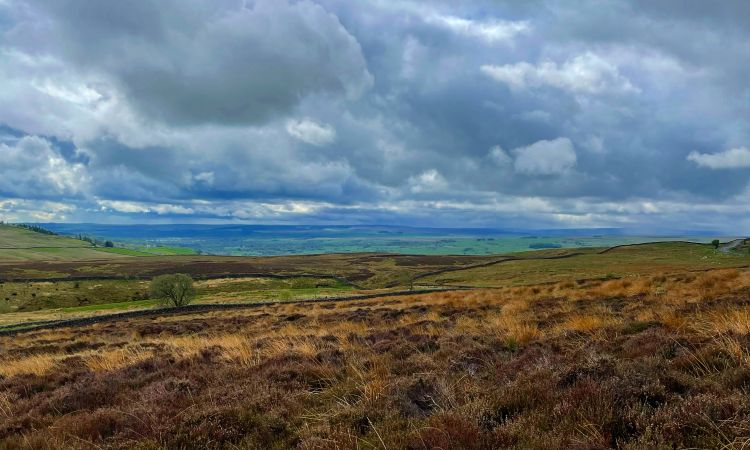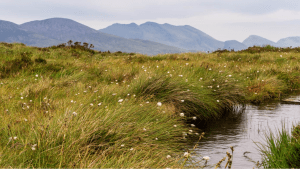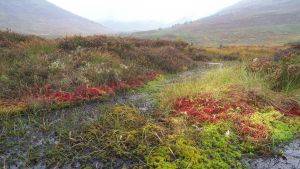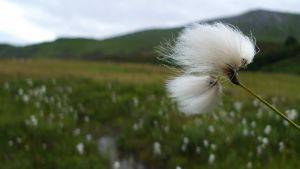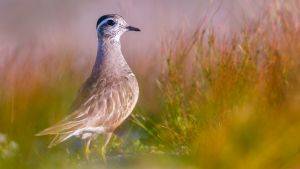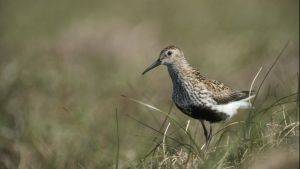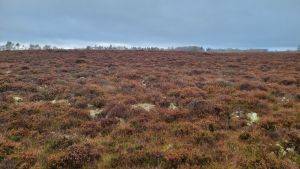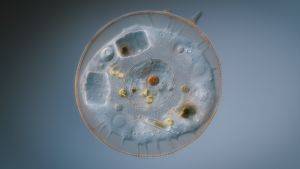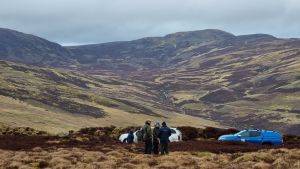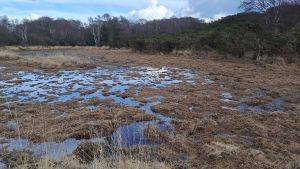Cuthbert's Moor
Introduction
Set at the heart of the Durham Dales on the eastern edge of the North Pennines, Cuthbert’s Moor is a 121ha upland moorland site and forms part of the Teesdale Allotments SSSI. Teesdale Allotments SSSI forms part of an extensive area of enclosed moorland and rough grazings, on the north side of the valley of the River Tees, and are of national importance for their breeding bird assemblage. Teesdale Allotments consists of a diverse range of upland vegetation types over an altitudinal range of 340 m to 590 m which includes wet acid pastures, mire and heather communities and a small number of hay meadows generally within large enclosures adjacent to the moor edge.
Description
The habitats on Cuthbert’s Moor are representative of the wider Teesdale Allotments, with all but upland hay meadow present. Around one sixth is wet heath and peatland habitat containing sphagnum mosses, bilberry heathers and cotton grasses. Around one sixth is wet heath and peatland habitat containing sphagnum mosses, bilberry heathers and cotton grasses. The steep eastward facing slopes are characterised by a drier heath community of ling, bilberry and matgrass. This forms a mosaic of heath and grassland habitats.
To the east of the road, a small area of in-bye grassland is seasonally wet and contains areas of wet grassland and small sphagnum pools. The mix of heath and grassland habitats support birds including lapwing, snipe, redshank, curlew and golden plover, short-eared owl and black grouse. A series of sikes (a small stream) run from the moor eventually joining the Eggleston Burn a tributary of the River Tees.
Project Aims
Cuthbert’s Moor, one of northern England’s most important upland sites, requires sympathetic management to realise its true ecological and environmental potential. This initial one year project funded by ScottishPower Foundation and Linder Foundation begins to restore peat and blanket bog habitats, and will deliver extensive baseline surveys, setup volunteering opportunities and citizen science engagement activities with schools and a cross section of communities and deliver practical habitat management. The intention is to establish Cuthbert's Moor as a central focal point for discussions on the preservation and rehabilitation of upland habitats, while also educating individuals about the broader societal advantages of safeguarding and revitalising this region.
{"zoom":13,"lat":54.6423603,"lon":-2.0253882,"markers":{"0":{"lat":54.646359614,"lon":-2.03644319}}}
Project Name: Cuthbert's Moor
Organisation / Lead partner: Durham Wildlife Trust
Location: Cuthbert's Moor
Approximate area covered: 121 ha
Conservation Status: Site of Special Scientific Interest (SSSI), Nature Reserve (NR), Area of Outstanding Natural Beauty (AONB)
Predominately: Upland
Peat Habitats: Blanket bog, Upland heath
Project Type: Restoration, Management, Research, Citizen science/ community engagement.
Year Project Began: 2023

